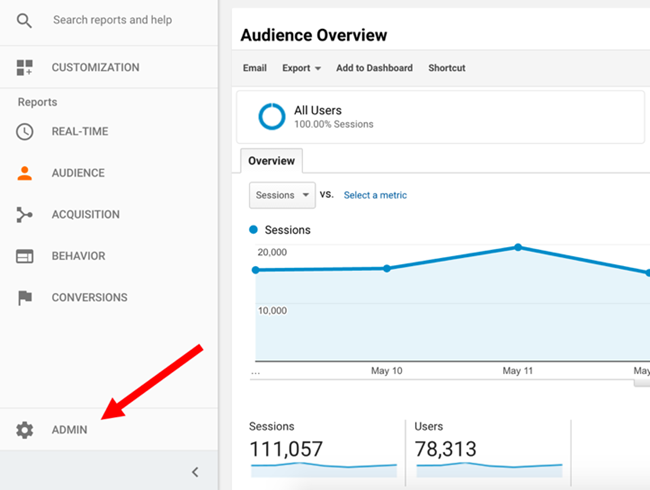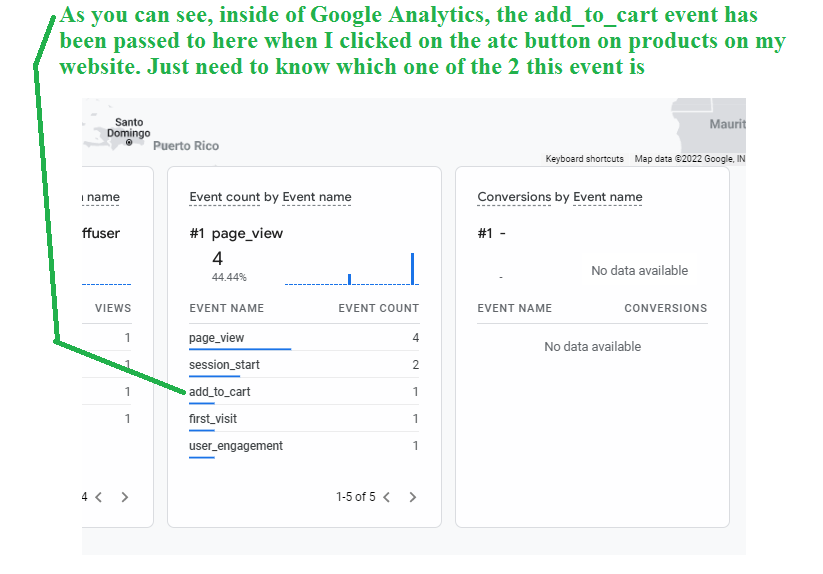Optimizing Your Projects with Remarketing In Google Analytics
Optimizing Your Projects with Remarketing In Google Analytics
Blog Article
Remarketing in Google Analytics: Transforming Site Visitor Information Into Sales
Remarketing in Google Analytics presents a critical strategy that holds the power to transform site visitor information into concrete sales end results. By taking advantage of the abilities of this innovative device, businesses can open a trove of understandings that lead the means for improved client interaction and income generation. The capacity to specifically target market based on their behavior and preferences opens doors to a world of possibilities, thrusting services towards lasting growth and productivity. With a meticulous analysis of visitor actions and a customized remarketing approach, businesses can browse the electronic landscape with precision and skill, deciphering real capacity of their on the internet visibility.

Benefits of Remarketing in Google Analytics
Remarketing in Google Analytics offers services the possibility to reconnect with website visitors that have actually shown passion in their services or products, consequently raising brand name visibility and conversions. By leveraging this powerful device, services can stay top-of-mind with prospective customers that have currently engaged with their internet site. One of the vital benefits of remarketing is the capacity to target certain target markets based on their actions on the internet site, enabling customized messaging and customized marketing campaign.
Furthermore, remarketing in Google Analytics can assist companies raise their conversion prices by re-engaging with site visitors that might not have actually bought or completed a preferred action on the web site throughout their preliminary go to. This targeted strategy can bring about higher conversion rates and eventually drive more sales. Additionally, remarketing can additionally assist companies construct brand name loyalty and depend on by keeping regular communication with prospective consumers throughout their purchasing trip.
Establishing up Remarketing Campaigns
When launching remarketing campaigns in Google Analytics, services need to very carefully prepare and implement critical targeting techniques to properly reach their wanted target market. The initial step in setting up remarketing projects is to specify clear objectives. Whether the objective is to enhance website conversions, promote details products, or increase brand name recognition, having a distinct goal will direct the entire project technique.
Next, organizations require to create audience listings based upon certain criteria such as internet site site visitors, customers who deserted their purchasing carts, or those who engaged with specific content. These lists allow for targeted messaging customized per sector of the audience, enhancing the possibilities of conversion.

Last but not least, services need to establish conversion monitoring to gauge the success of their remarketing campaigns precisely. By examining the efficiency data, companies can enhance their advocate much better results and higher ROI.
Leveraging Target Market Division for Remarketing
Utilizing audience segmentation is a critical strategy for improving the efficiency of remarketing campaigns in Google Analytics (What Is “Remarketing” In Google Analytics?). By separating your site visitors into unique teams based on their habits, demographics, or passions, you can customize your remarketing efforts to target these particular segments with appropriate advertisements. Target market segmentation allows you to produce even more tailored and targeted campaigns, raising the opportunities of re-engaging visitors and driving conversions
Segmenting your target market allows you to deliver customized messaging that reverberates with each team's demands and preferences. You can create separate remarketing listings for individuals who deserted their shopping carts, visited details product web pages, or downloaded Full Article and install a particular source. By comprehending the different motivations and rate of interests of these sections, you can craft engaging advertisement creatives that are more probable to catch their focus and motivate them to revisit your website.
Additionally, audience division additionally assists you maximize your advertisement spend by concentrating on high-value sectors that are more probable to convert - What Is “Remarketing” In Google Analytics?. By assessing the efficiency of each section, you can allot your spending plan much more properly and make the most of the return on your remarketing investment
Analyzing Remarketing Efficiency Metrics
Metrics such as click-through rate (CTR), conversion price, cost per procurement (CPA), and return on advertisement spend (ROAS) offer valuable insights into the efficiency of your remarketing efforts. CPA aids identify the cost of acquiring a customer with your remarketing campaign, while ROAS examines the profits generated for each dollar spent on advertising and marketing. By assessing these metrics, you can recognize locations for renovation, enhance your projects, and allocate budget extra efficiently to optimize the ROI of your remarketing techniques in Google Analytics.

Best Practices for Remarketing Success
Structure on the foundation of evaluating remarketing performance metrics, executing special info finest methods is vital to accomplishing success in your remarketing ventures. Additionally, ensure that your remarketing advertisements are visually enticing and have compelling calls to activity.
Pounding individuals with the exact same ad repetitively can lead to inconvenience and lowered performance. Monitor your projects frequently, analyze the data, and make data-driven choices to constantly refine your remarketing initiatives for maximum effect.
Verdict
In verdict, remarketing in Google Analytics uses services the opportunity to utilize visitor data to raise sales and drive conversions. By utilizing target market segmentation, analyzing efficiency metrics, and carrying out ideal practices, organizations can tailor their remarketing efforts to target high-value sectors efficiently. Via compelling ad creatives and conversion tracking, organizations can construct brand name loyalty and trust, eventually optimizing the impact of their marketing approaches.
Via a meticulous analysis of visitor actions and a customized remarketing approach, companies can navigate the electronic landscape with accuracy and finesse, unraveling the real capacity of their on the internet presence.
One of the essential benefits of remarketing is the capacity to target particular target markets based on try these out their behavior on the site, enabling for individualized messaging and customized advertising and marketing projects.
Additionally, remarketing can additionally assist companies develop brand commitment and depend on by maintaining regular interaction with potential customers throughout their buying trip.
Metrics such as click-through price (CTR), conversion rate, expense per acquisition (CPA), and return on ad spend (ROAS) offer valuable understandings right into the efficiency of your remarketing initiatives. By examining these metrics, you can determine locations for enhancement, enhance your campaigns, and allot budget plan extra effectively to take full advantage of the ROI of your remarketing strategies in Google Analytics.
Report this page